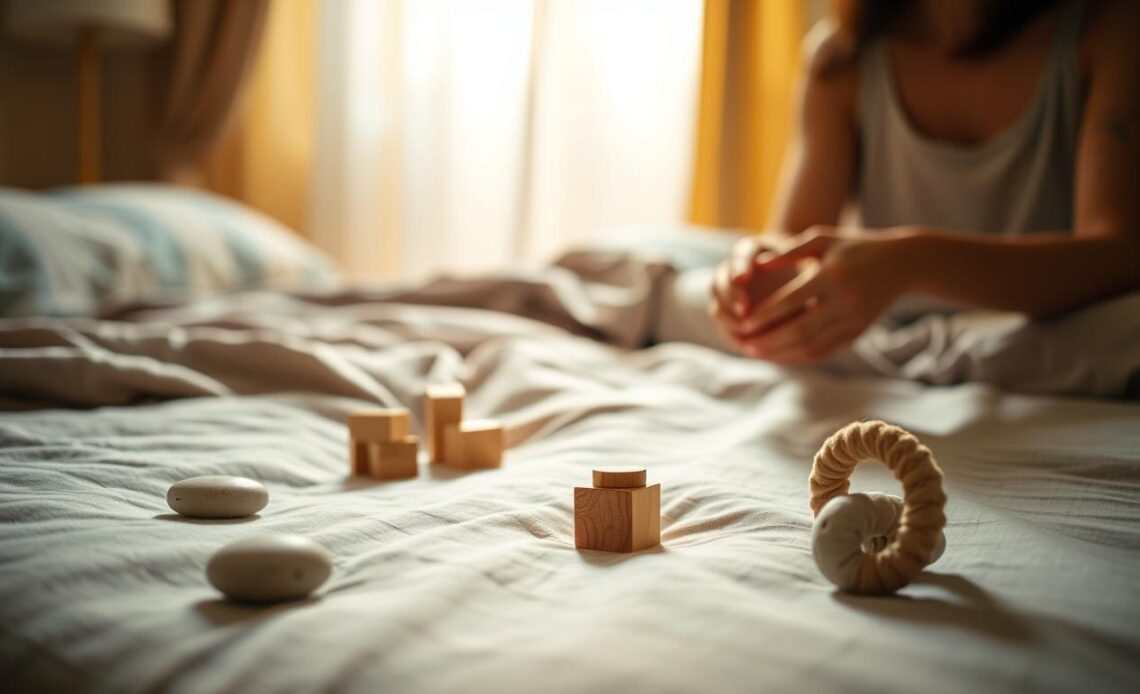
Welcome to our comprehensive guide to quiet play techniques and discreet toys, designed to help you create peaceful moments in your home without sacrificing educational value or fun.
We understand that finding the right balance between active play and quiet time is essential for both kids and parents in today’s busy households.
Our expert toy tips will help you transform your approach to playtime, fostering concentration, independence, and creative thinking in kids of all ages.
Whether you’re looking for solutions during travel, in small living spaces, or simply to create moments of calm in your daily routine, we’ve got you covered.
Key Takeaways
- Discover the importance of balancing active play and quiet time for kids.
- Learn expert tips for implementing quiet play techniques.
- Explore discreet toys that promote concentration and creative thinking.
- Find solutions for creating peaceful moments in busy households.
- Understand how quiet play supports developmental skills in children.
The Importance of Quiet Play in Child Development
Quiet play is not just a respite for parents; it’s a valuable tool for enhancing a child’s cognitive and emotional abilities. As we navigate the challenges of parenting, we often find that incorporating quiet time into our children’s daily routine can be a game-changer. By doing so, we provide our kids with the opportunity to develop essential skills that will benefit them throughout their lives.
Some of the key benefits of quiet play include:
- Developing critical thinking skills through independent activities
- Improving emotional regulation and self-control
- Enhancing focus and attention span
- Encouraging self-directed learning and exploration
Building Independence Through Silent Activities
When children engage in quiet play, they learn to entertain themselves without constant external stimulation. This independence is crucial for building confidence and self-reliance. By introducing quiet time early, around 18 months to 2 years, parents can establish healthy habits that will grow with their child through different developmental stages. As a result, kids develop the ability to occupy themselves, reducing their reliance on constant adult interaction.
Creating Balance Between Active and Quiet Time
Alternating between active and quiet play helps children develop better focus and attention spans. Research shows that this balance is essential for kids to recharge and process their experiences. By incorporating quiet time into their daily routine, parents can help their children develop the skills they need to succeed in school and beyond. As we strive to create a healthy balance between active and quiet time, we can support our children’s overall development and well-being.
By prioritizing quiet play, we can give our children the tools they need to thrive. As parents, it’s our responsibility to ensure that our kids have the opportunity to engage in quiet activities that promote healthy growth and development.
Setting Up a Successful Quiet Time Routine
Creating a quiet time routine that works for your family can be a game-changer. We understand the importance of having a peaceful and quiet environment, especially for kids, to help them develop independence and self-entertainment skills. In our experience, having a quiet time each day is necessary, and breaking it into manageable chunks makes it even more effective.
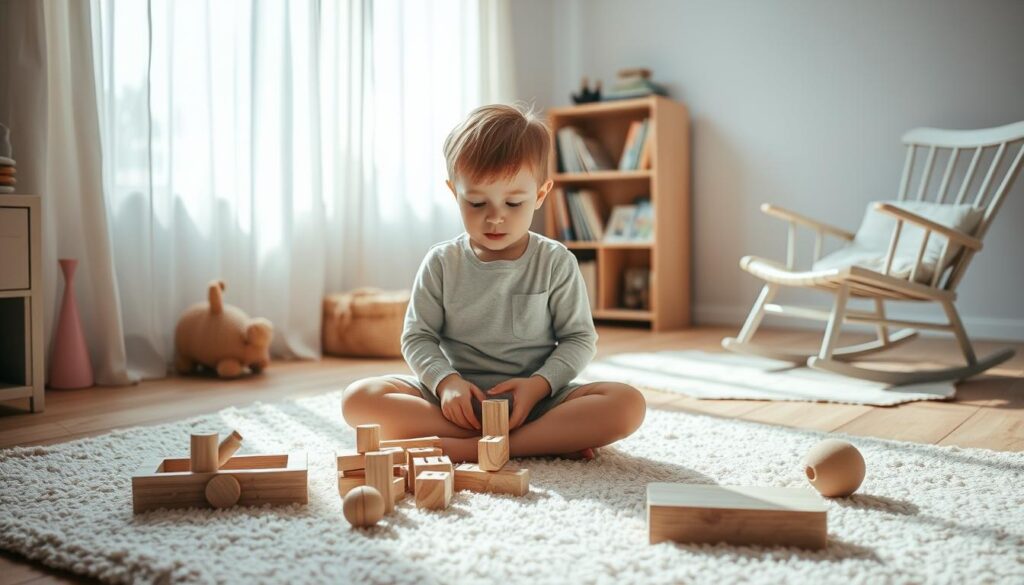
Establishing a Dedicated Quiet Play Space
Designating a specific space for quiet play is the first step towards a successful quiet time routine. This space should be comfortable, well-lit, and free from major distractions, allowing your kids to focus on their activities. For instance, you can convert a corner of your family room or a section of your child’s bedroom into a quiet play area. Ensuring that this space is inviting and cozy will encourage your kids to spend their quiet time productively.
Creating a Schedule That Works for Your Family
Consistency is key when it comes to quiet time. Aim to schedule quiet time at the same time each day so it becomes a predictable and expected part of your family’s routine. For many families, this means incorporating quiet time into their daily schedule, perhaps after lunch or before outdoor play. Be flexible and observe what works best for your family, considering factors like nap times and meal schedules.
Transitioning from Nap Time to Quiet Time
As your child grows from a baby to a toddler, transitioning from nap time to quiet time is a significant milestone. Start with short 15-minute sessions and gradually extend the duration as your child adapts to the new routine. This transition typically occurs between ages 2-4, and patience is crucial during this period. By introducing quiet time gradually, you help your child develop healthy habits that will benefit them for years to come.
To make quiet time even more effective, consider breaking it into manageable chunks, such as 30-minute segments, especially when first establishing this habit with younger children. Clear expectations also help children succeed—explain what quiet time means in your household and what activities are appropriate during this period.
Age-Appropriate Quiet Play Toy Tips
As children grow, their play preferences change, making it essential to select quiet toys that match their developmental stage. The right toys can foster independence, support cognitive development, and keep kids engaged for extended periods.
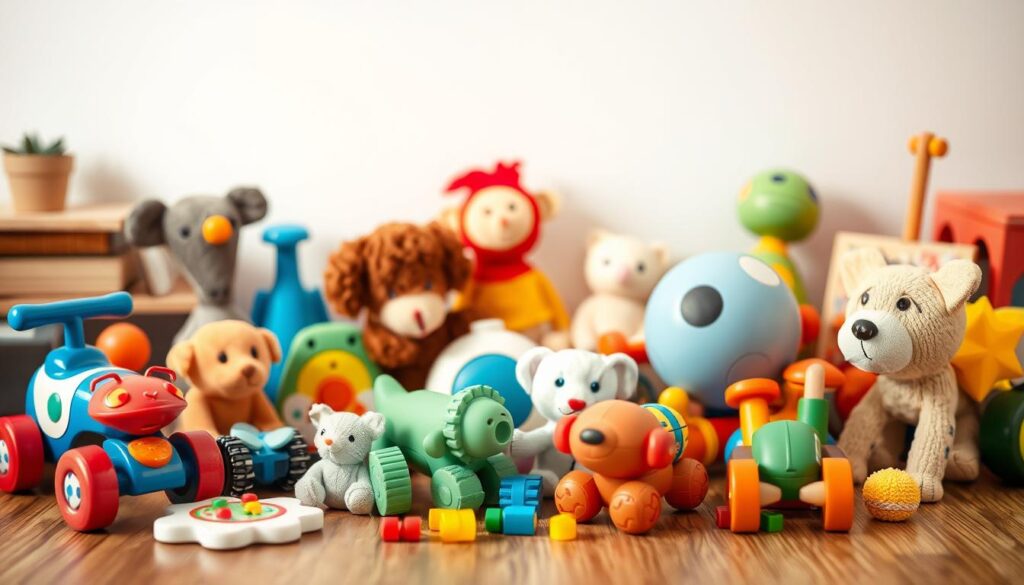
Toddlers (18 Months -3 Years)
For toddlers, it’s crucial to focus on simple, chunky toys that are easy to manipulate and don’t have small parts. Chunky puzzles, stacking blocks, and board books designed for independent exploration are ideal. These toys help develop fine motor skills and hand-eye coordination. Sensory toys like fabric books or soft stacking rings are also great for this age group, laying the foundation for future quiet play habits.
Preschoolers (3-5 Years)
Preschoolers benefit from toys that challenge their growing cognitive abilities while remaining engaging. Consider pattern blocks, simple board games they can play alone, and picture-rich books they can “read” by following the illustrations. These activities enhance problem-solving skills and encourage independent play. The Peculiar Pets set is an excellent example, as it includes a variety of components like washable markers, a scrub brush, and a standing play mat that can keep children occupied for an hour or more.
School-Age Children (6+ Years)
School-age children are ready for more complex quiet activities. Logic puzzles, craft kits, and building sets with detailed instructions are perfect for this age group. These toys not only challenge their minds but also promote deep concentration and problem-solving skills. Chapter books appropriate for their reading level are also an excellent choice, fostering a love for reading and independent exploration.
When selecting quiet toys for any age, consider the noise level, the number of pieces, and the level of independent engagement the toy provides. The best quiet toys are those that grow with your child, offering open-ended options that can be used in multiple ways as their skills and interests evolve.
Reading and Writing Tools for Silent Engagement
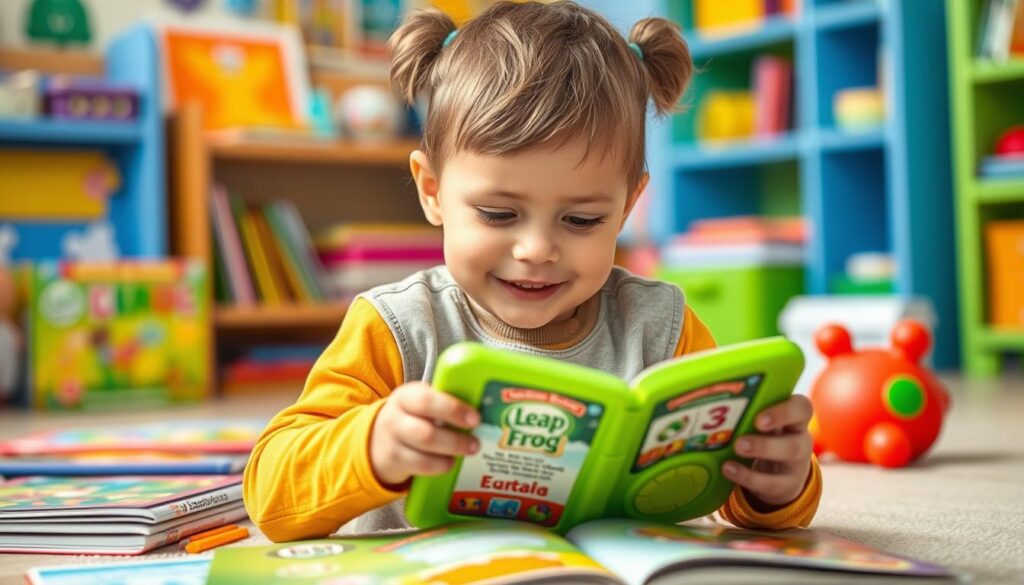
Fostering a love for reading and writing in children can be achieved through the use of innovative and silent engagement tools. These tools not only make learning fun but also provide kids with the independence to explore and develop their skills at their own pace.
Interactive Reading Systems
Interactive reading systems like the LeapFrog LeapReader provide children with the independence to “read” books on their own, even before they’ve mastered traditional reading skills. The LeapFrog LeapReader, for instance, has been a leader amongst educational toys since its debut and is suitable for kids aged 3-8 years. Our experience with this product has shown that it can significantly instill a love of reading in kids.
Writing Tablets and Boards
Electronic writing tablets and reusable drawing boards offer children the satisfaction of creating without the noise of rustling paper or the mess of traditional art supplies. For children learning to write, magnetic letter boards and dry-erase writing tablets provide silent practice opportunities that can be used repeatedly during quiet time.
Engaging Books for Independent Exploration
Building a collection of engaging picture books with detailed illustrations encourages children to spend time quietly exploring stories through images, developing narrative skills even without reading the text. Non-fiction books with rich photography, such as animal encyclopedias or space books, are particularly engaging for independent exploration, as kids can spend significant time examining detailed images.
Creating a special “quiet time book basket” that’s only available during designated quiet periods can make these reading materials feel special and exciting. Digital reading tools can also be valuable additions to quiet time, especially systems that read to children through headphones while highlighting text for them to follow along.
Puzzles and Logic Games for Deep Concentration
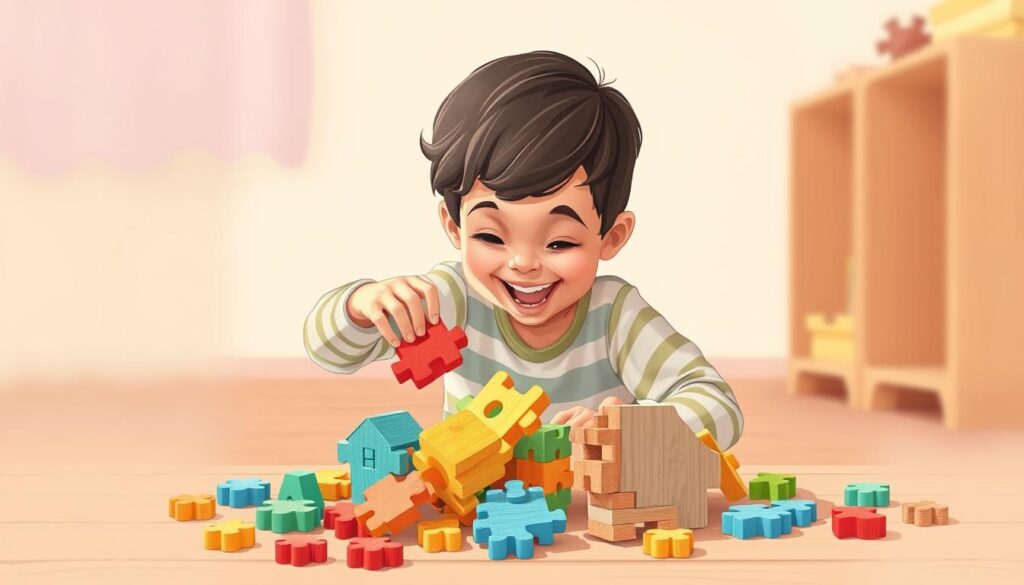
For children to develop their logical thinking and spatial reasoning, puzzles and logic games are indispensable tools. These activities not only engage kids in quiet time but also significantly enhance their concentration abilities.
Simple Puzzles for Beginners
Starting with simple wooden puzzles is an excellent way to introduce toddlers to the world of quiet play. These toys come with large pieces and clear pictures, providing success experiences that build confidence for more challenging puzzles later on. As children grow, they can progress to more complex jigsaw puzzles that keep them engaged for over an hour.
Advanced Logic Games for Older Children
As kids get older, they can move on to single-player logic games like ThinkFun’s Chocolate Fix or SmartGames’ Castle Logix. These games are designed to challenge children with progressively difficult levels, keeping them engaged in quiet time while developing their problem-solving skills. Castle Logix, for instance, is suitable for children aged between 3 to 8 years and is priced at $27.99.
Pattern and Sorting Activities
Pattern and sorting activities, such as bead sequencing or color sorting, offer a perfect balance of structure and creativity. These activities allow children to work methodically in silence, enhancing their logic and concentration. Magnetic pattern blocks and tangram puzzles are versatile options that combine spatial reasoning with creative design possibilities.
Mess-Free Art Supplies for Creative Quiet Time
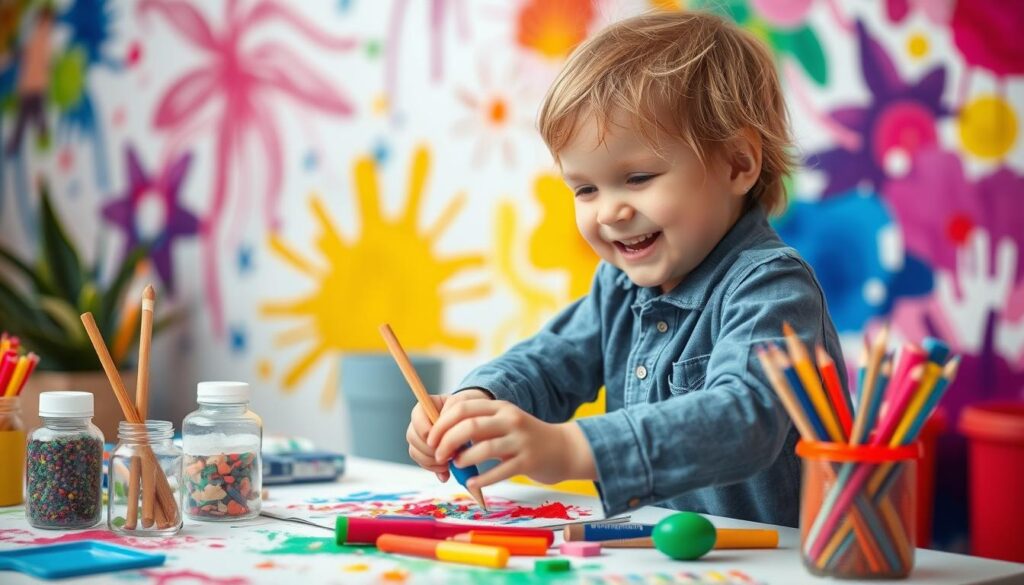
We’ve discovered that mess-free art supplies are an excellent way to keep our kids engaged and creative during quiet time. These innovative tools provide a perfect solution for parents seeking to encourage artistic expression without the hassle of cleanup.
Mess-free art supplies offer a range of benefits, including reduced stress and increased creativity. By incorporating these supplies into quiet time, parents can create a peaceful environment that fosters imagination and self-expression.
Reusable Drawing Boards and Tablets
Reusable drawing boards and tablets, such as Boogie Boards, are an excellent option for kids. They provide the satisfaction of drawing with the convenience of an instant erase button, extending creative play without paper waste.
Sticker Activities and Books
Reusable sticker books, like those from Melissa & Doug, offer endless rearrangement possibilities and are completely silent during use. These sticker books are perfect for creative storytelling without noise and are great for traveling.
Paint-With-Water and No-Mess Coloring Options
Water-reveal coloring books eliminate the need for markers or crayons that can roll off surfaces and break the silence. Children simply use a water pen to reveal hidden colors and designs, making it a fun and mess-free activity.
By incorporating these mess-free art supplies into quiet time, parents can provide their kids with a creative outlet that is both fun and stress-free. Rotating art supplies can help maintain novelty and interest, making quiet time even more enjoyable.
Building and Construction Toys for Silent Play
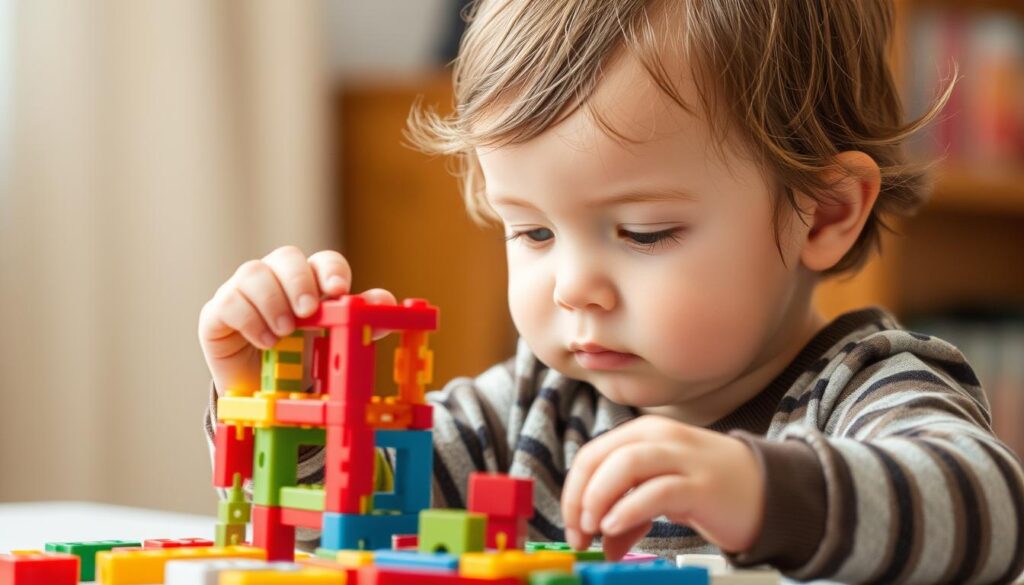
Engaging in quiet play with building toys can be a highly rewarding experience for children. These toys not only foster creativity but also help in developing various skills such as problem-solving, fine motor skills, and spatial awareness.
Magnetic Building Sets
Magnetic building sets are an excellent choice for quiet play. They offer a silent way to build and create, unlike traditional blocks that can clatter. Magnetic tiles, like Magna-Tiles, are particularly popular as they combine color recognition, pattern making, and structural engineering, keeping kids engaged for extended periods.
Interlocking Block Systems
Interlocking block systems, such as LEGO or Duplo, are another great option. They allow children to follow instructions or create their own designs, promoting independent play. Adding block tape can expand play possibilities by allowing building on vertical surfaces.
Design and Assembly Activities
Design and assembly activities with clear visual instructions are perfect for maintaining a quiet atmosphere. They enable children to work independently, developing their problem-solving skills and creativity. These activities can range from simple stacking in toddlerhood to complex design challenges in later years, making them excellent long-term investments for quiet play.
By incorporating these building and construction toys into quiet time, parents can provide their kids with engaging, silent play experiences that are both fun and educational.
Top Quiet Play Toy Tips for Different Situations
As we explore quiet play further, it becomes clear that different scenarios require tailored approaches. Whether you’re traveling, managing siblings, or dealing with limited space, having the right quiet play toys and strategies can make all the difference.
Quiet Play During Travel
Traveling with kids can be challenging, but with the right toys, you can keep them engaged without disturbing others. Compact, multi-use toys like magnetic travel games, activity books, or small building sets are ideal. They pack easily and provide hours of entertainment. For instance, a friend’s children loved playing with an Air Fort, an inflatable play tent that sets up in 30 seconds, perfect for creating a cozy play area in a hotel room or at home.
Silent Activities for Siblings Sharing Space
When siblings share a space during quiet time, it’s essential to provide each child with their own clearly defined activity zone. Using compatible yet separate activities can minimize conflicts while maintaining a peaceful atmosphere. For example, providing different activity books or puzzles for each child can keep them engaged without causing friction.
Quiet Play Options for Small Living Spaces
In small living spaces, it’s crucial to opt for toys that store compactly but offer expansive play value. Items like pop-up play tents, foldable magnetic boards, or activity books are excellent choices. They take up minimal storage space but provide substantial engagement for kids. As one parent noted, “Such an easy way for kids to set up a fort – set up (and clean up!) is so simple… like 30 seconds easy.”
Other valuable tips include considering noise-cancelling headphones for older children who enjoy audio content during quiet time, and creating themed quiet time kits for different situations, such as travel or rainy days. For households with varying age ranges, look for activities with “parallel play” potential, where children can engage with the same toy in different ways according to their developmental level.
Creating a Rotating Quiet Time Activity Bin
We’ve found that a rotating quiet time activity bin significantly improves the success rate of quiet time at our house. Making this bin for our kids and setting up quiet time into three chunks (rather than one long setting) made all the difference. This approach not only keeps our kids engaged but also helps in maintaining their interest in quiet activities.
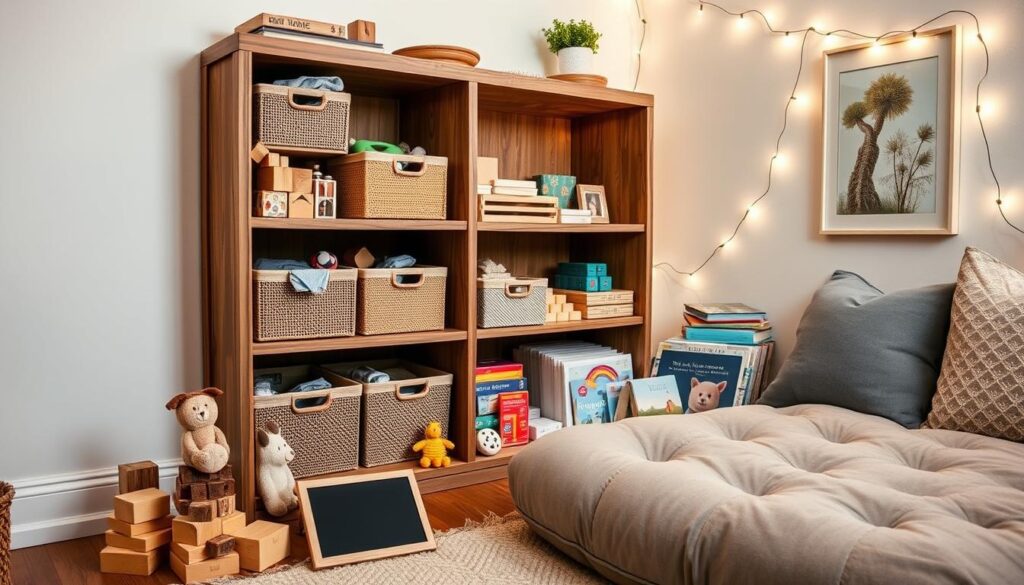
Essential Components for Your Quiet Time Bin
A well-curated quiet time bin should include a balanced mix of activities to cater to different aspects of a child’s development. This includes something creative like drawing materials, something constructive like building toys, something cognitive like puzzles, and something comforting like favorite books. By incorporating a variety of activities, you can ensure that your child’s quiet time is both enjoyable and enriching.
For a one-year-old, simple toys and activities that stimulate their senses are ideal. As children grow, the complexity and type of activities can be adjusted accordingly. For instance, toddlers can benefit from simple puzzles and stacking toys, while older children can engage with more complex puzzles and building sets.
Rotation Strategies to Maintain Interest
To keep the quiet time activities fresh and exciting, it’s essential to establish a rotation system. We recommend making only 3-4 activities available at any given time and introducing new options weekly to maintain novelty and interest. This can be achieved by storing the activities in a clear plastic bin with compartments, keeping them organized and visually appealing.
Some parents find success with themed bins that change monthly, such as space exploration or ocean life, to create cohesive quiet time experiences. Documenting which activities hold your child’s attention longest can also guide future purchases and rotations, ensuring that the quiet time bin remains engaging and relevant.
Educational Benefits of Our Favorite Quiet Toys
Engaging in quiet play with the right toys can significantly boost a child’s developmental progress. Quiet toys are designed to be both entertaining and educational, providing children with a range of skills that are essential for their growth.
Fine Motor Skill Development
Quiet toys often play a crucial role in developing fine motor skills in children. Activities such as lacing beads, using tweezers with sorting games, and manipulating puzzle pieces help strengthen the small muscles in their hands. For instance, the Learning Resources Super Sorting Pie is an excellent example of a toy that reinforces fine motor skills needed for handwriting. The jumbo tweezers included with this toy help children improve their hand-eye coordination and dexterity.
As children engage in these activities, they develop the precision and control necessary for future academic success, particularly in tasks that require writing and drawing.
Cognitive and Problem-Solving Growth
The cognitive benefits of quiet play are substantial. Children develop longer attention spans, improved problem-solving abilities, and enhanced spatial reasoning through engaging with puzzles, building sets, and logic games. These activities challenge children to think critically and approach problems from different angles.
“Play is the highest form of research.” – Albert Einstein
This quote highlights the importance of play in cognitive development. By engaging with quiet toys, children are able to explore, experiment, and learn at their own pace.
| Toy/Activity | Cognitive Benefit |
|---|---|
| Puzzles | Improved problem-solving abilities |
| Building Sets | Enhanced spatial reasoning |
| Logic Games | Longer attention spans |
Literacy and Numeracy Advancement
Many quiet toys naturally support literacy and numeracy development. Activities like matching letter tiles, exploring picture books independently, or using electronic reading systems provide feedback without adult intervention. Numeracy skills flourish during quiet play with sorting activities, pattern recognition games, and building toys that incorporate counting and spatial awareness.
For example, the Learning Resources Super Sorting Pie not only reinforces fine motor skills but also introduces early math concepts such as sorting, counting, and patterning. By engaging with such toys, children develop a strong foundation in both literacy and numeracy, setting them up for future academic success.
Implementing Quiet Play Toy Tips for Success
As we navigate the world of quiet play, it’s essential to implement strategies that foster a peaceful and productive environment for our children. Quiet play is a valuable tool in a parent’s arsenal, promoting independence, self-regulation, and cognitive development.
To achieve success with quiet play, we need to consider a few key factors. Setting clear expectations is crucial. This involves explaining what quiet time means, how long it will last, and what behaviors are acceptable during this period. By doing so, we help our children understand what is expected of them.
Setting Clear Expectations
Clear expectations help children feel secure and develop a sense of responsibility. It’s essential to communicate the rules and guidelines clearly, ensuring that our children understand what is expected of them during quiet time.
Gradually Extending Quiet Play Duration
Starting with short sessions (10-15 minutes) for younger children and gradually extending the duration as their stamina for independent play increases is a great way to build their endurance. Most children can work up to 30-60 minutes of quiet time by age 4-5.
Balancing Independent Play with Interactive Time
Creating a balanced daily rhythm that includes both independent quiet play and interactive family time is vital. This ensures that children don’t feel isolated or disconnected from their family members.
| Age Group | Quiet Play Duration | Tips for Success |
|---|---|---|
| Toddlers (1-3 years) | 10-15 minutes | Start with short sessions and gradually increase duration |
| Preschoolers (3-5 years) | 30-60 minutes | Use visual timers to help them understand the concept of time |
| School-age children (6+ years) | 60 minutes or more | Encourage independent play and provide a variety of activities |
By implementing these strategies and being patient with the process, we can help our children develop the skills they need to succeed in quiet play.
Conclusion: Embracing the Power of Quiet Play
As we’ve seen, incorporating quiet play into daily life can have a profound impact on a child’s ability to entertain themselves and learn. Quiet play represents a powerful tool for developing independent, focused, and creative kids. By thoughtfully implementing quiet play toy tips, you’re investing in skills that will benefit your child throughout their educational journey and beyond.
Remember, quiet time looks different in every home. Adapt our suggestions to fit your family’s unique rhythm and your child’s individual interests. As your child grows, quiet play will evolve into more complex creative pursuits, establishing a foundation for lifelong learning habits. Start small, be consistent, and celebrate the moments of focused engagement your child achieves during quiet play time.
FAQ
What are some fine motor activities suitable for toddlers?
We recommend using Melissa & Doug puzzles, stacking blocks, and interlocking building sets to help develop fine motor skills in our little ones, typically between 18 months to 3 years.
How can we create a dedicated quiet play space at home?
To establish a quiet play area, we suggest designating a specific room or section of a room, like a couch corner or a cozy nook, and filling it with engaging books, puzzles, and other activities that promote independent child development.
What are some age-appropriate quiet play options for preschoolers?
For preschoolers, aged 3-5 years, we find that board games, simple puzzles, and sticker activities are excellent ways to encourage silent engagement and cognitive growth while having fun.
How long should quiet time last for toddlers and preschoolers?
We recommend starting with shorter quiet time periods, around 1 hour, and gradually increasing the duration as our children grow and develop their ability to focus and engage in independent activities.
Can quiet play help with screen time reduction?
Absolutely, incorporating quiet play into our daily routine can significantly reduce screen time by providing our children with engaging alternatives that promote learning, creativity, and fine motor skills.
What are some mess-free art supplies suitable for young children?
We love using reusable drawing boards, sticker books, and paint-with-water options for creative expression without the mess, making them perfect for quiet time and independent play.
How can we make quiet play a part of our daily routine?
To make quiet play a habit, we suggest incorporating it into our daily schedule, ideally at the same time each day, such as after lunch or before bedtime, to create a sense of consistency and predictability for our children.

